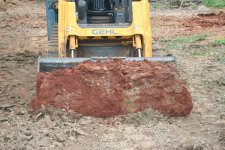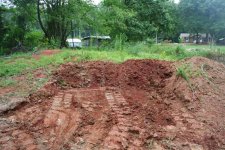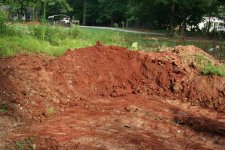AlanB
Elite Member
Folks I missed on this and must not have explained myself.
I Have a hole.
I dug the hole down to the stable soil (red clay)
I am filling that hole back up to build on.
Red Clay is what I WANT.
The ground here is too "squishy" to build on (when wet the backhoe sinks) which is why I have the big hole now.
The normal operation in this area is to dig too red clay, then fill with compacted red clay fill to grade or near grade then top with gravel and pour concrete etc.
I am building a shop, concrete slab floor.
It will probably be a pole barn (as Ken said, sinking the posts down further to get to stable ground)
The question I have.
How do you determine the % or volume or suitability of the "red Clay" that you are looking at. I am thinking there should be some form of basic field test like a perc test or separation test to "grade" the soil.
rScotty, I will see if I can find that book.
http://www.clarksville.tn.us/downloads/Teeter Preliminary Geotechnical Study.pdf
If interested, this is out there, that site is about 3 to 4 miles from the house, similar ground. Page 5 pretty much sums up what I am doing.
The question though (I see the jargon, want to know what it translates to in reality) is how do they actually judge or grade that fill?
I Have a hole.
I dug the hole down to the stable soil (red clay)
I am filling that hole back up to build on.
Red Clay is what I WANT.
The ground here is too "squishy" to build on (when wet the backhoe sinks) which is why I have the big hole now.
The normal operation in this area is to dig too red clay, then fill with compacted red clay fill to grade or near grade then top with gravel and pour concrete etc.
I am building a shop, concrete slab floor.
It will probably be a pole barn (as Ken said, sinking the posts down further to get to stable ground)
The question I have.
How do you determine the % or volume or suitability of the "red Clay" that you are looking at. I am thinking there should be some form of basic field test like a perc test or separation test to "grade" the soil.
rScotty, I will see if I can find that book.
http://www.clarksville.tn.us/downloads/Teeter Preliminary Geotechnical Study.pdf
If interested, this is out there, that site is about 3 to 4 miles from the house, similar ground. Page 5 pretty much sums up what I am doing.
The question though (I see the jargon, want to know what it translates to in reality) is how do they actually judge or grade that fill?



